Laurie Aftanas
Advisor: Shawn Bailey
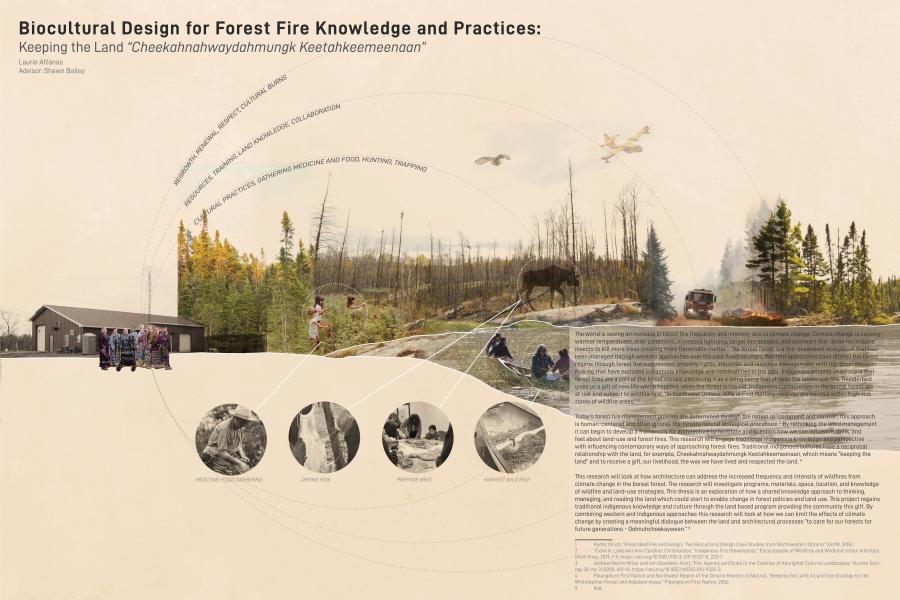
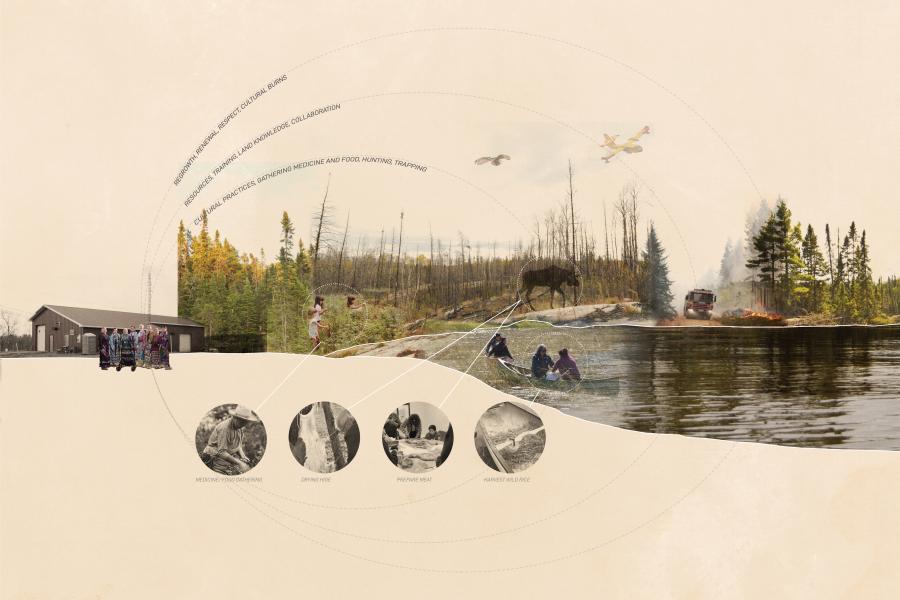
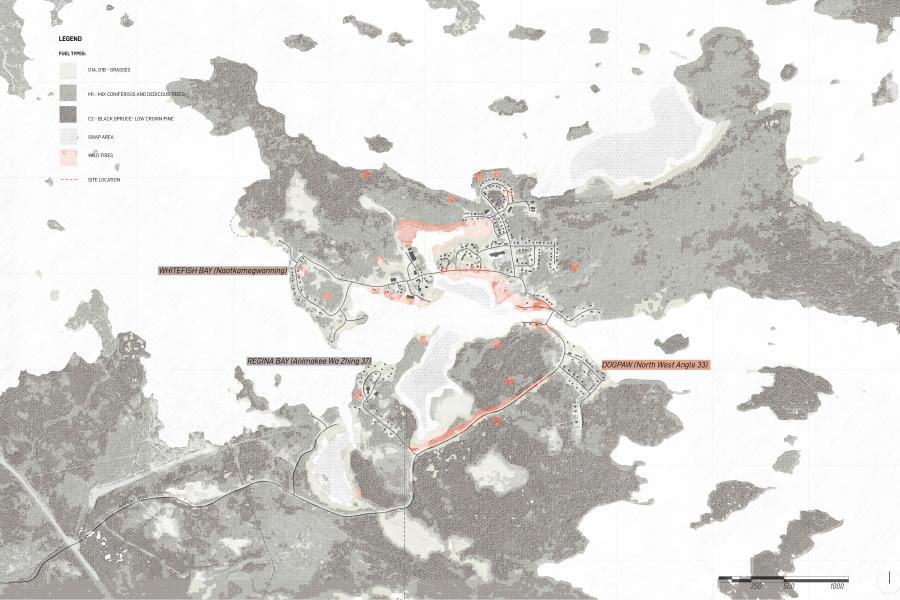
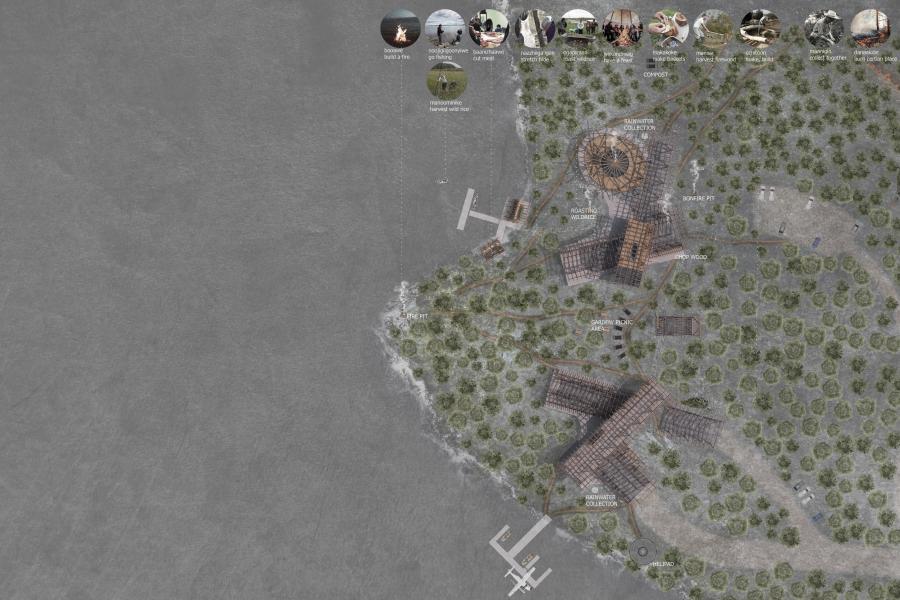

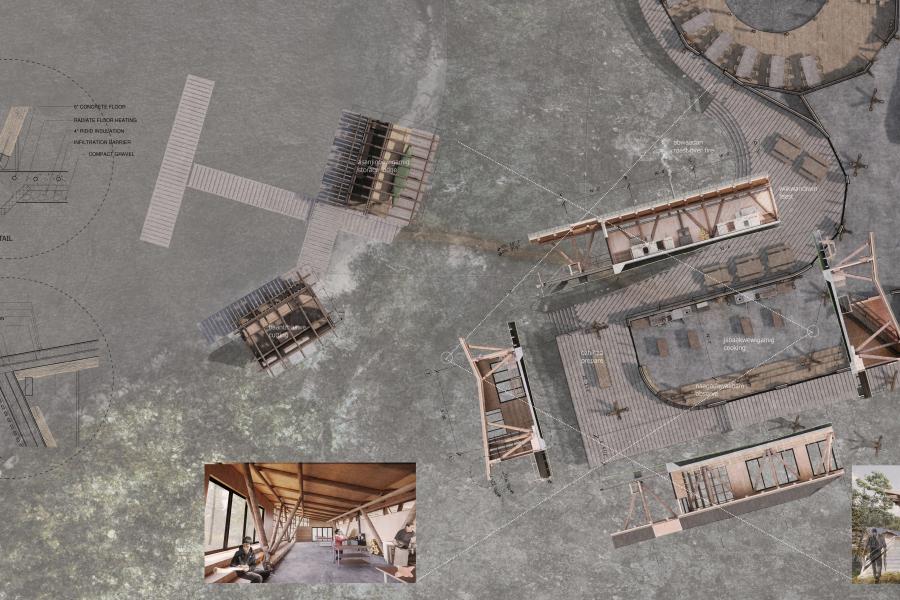
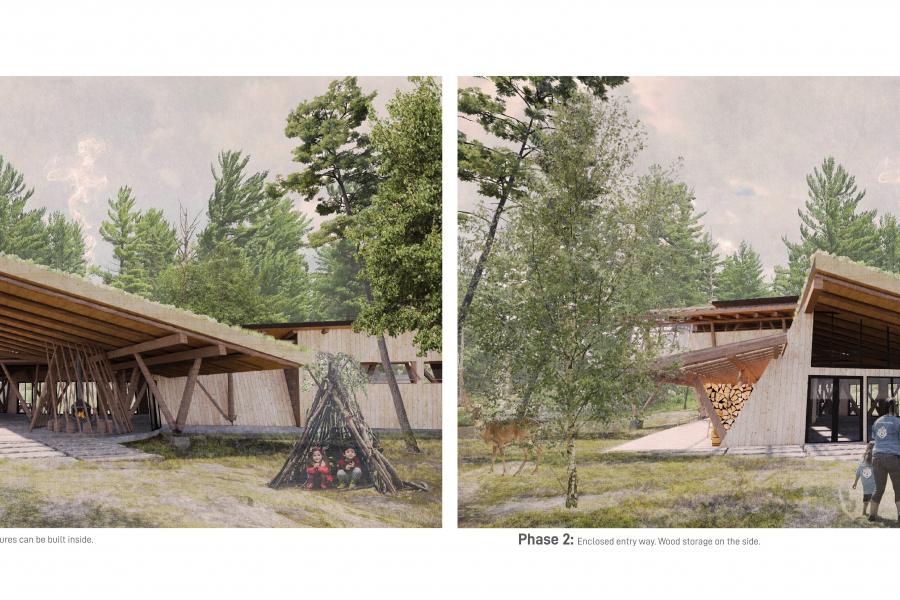
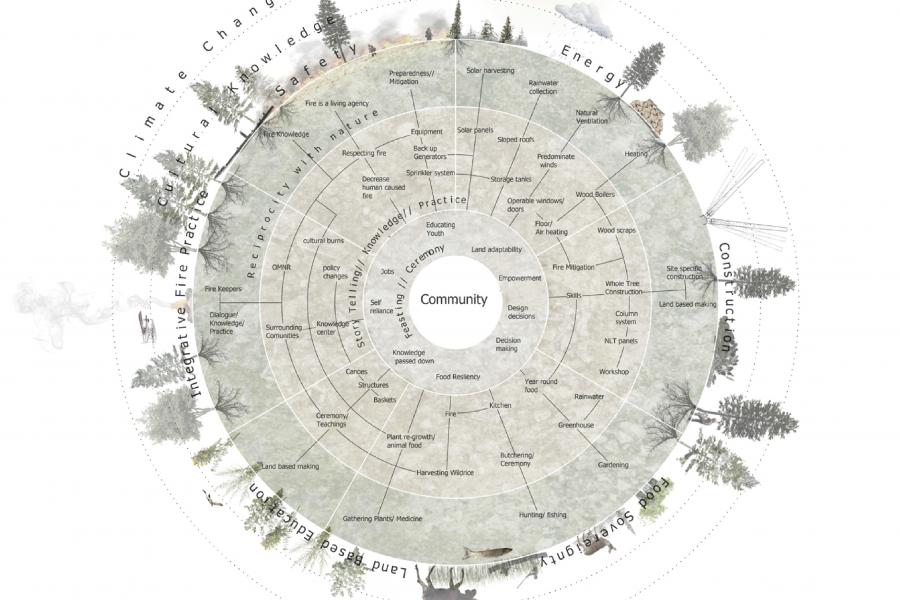
Biocultural Design for Forest Fire Knowledge and Practices:
Keeping the Land "Cheekahnahwaydahmungk Keetahkeemeenaan”
The world is seeing an increase in forest fire frequency and intensity due to climate change. Climate change is causing warmer temperatures, drier conditions, increased lightning, longer fire seasons, and summers that allow for invasive insects to kill more trees creating more flammable matter.1 The boreal forest is a fire-dependent ecosystem that has been managed through western approaches over the past hundred years. Western approaches have altered the forest regime through forest fire suppression, property rights, industrial and resource management, with top-down decision making that have excluded Indigenous knowledge and communities in the past. Indigenous peoples understand that forest fires are a part of the forest mosaic perceiving it as a living being that shapes the landscape; the Thunderbird gives us a gift of new life which happens when the forest is too old. Indigenous communities in the boreal forest are at risk and subject to wildfire first. “In Northwest Ontario, 60% of First Nations reserves are located within high-risk zones of wildfire areas.”2
Today’s forest fire management policies are determined through the notion of “command and control”, this approach is human-centered and often ignores the forests natural ecological processes.3 By rethinking the word management it can begin to develop a framework for architecture to facilitate and question how we can influence, think, and feel about land-use and forest fires. This research will engage traditional Indigenous knowledge and perspective with influencing contemporary ways of approaching forest fires. Traditional Indigenous cultures have a reciprocal relationship with the land, for example, Cheekahnahwaydahmungk Keetahkeemeenaan, which means "keeping the land” and to receive a gift, our livelihood, the way we have lived and respected the land.4
This research will look at how architecture can address the increased frequency and intensity of wildfires from climate change in the boreal forest. The research will investigate programs, materials, space, location, and knowledge of wildfire and land-use strategies. This thesis is an exploration of how a shared knowledge approach to thinking, managing, and reading the land which could start to enable change in forest policies and land use. This project aims to regain traditional Indigenous knowledge and culture through land based program providing the community this gift. By combining western and Indigenous approaches this research will look at how we can limit the effects of climate change by creating a meaningful dialogue between the land and architectural processes “to care for our forests for future generations - Oohnuhcheekayween.”5
1 M. D. Flannigan et al., “Forest Fires and Climate Change in the 21ST Century,” Mitigation and Adaptation Strategies for Global Change 11, no. 4 (2006): 847–59, https://doi.org/10.1007/s11027-005-9020-7.
2 Frank K. Lake and Amy Cardinal Christianson, “Indigenous Fire Stewardship,” Encyclopedia of Wildfires and Wildland-Urban Interface (WUI) Fires, 2019, 1–9, https://doi.org/10.1007/978-3-319-51727-8_225-1.
3 Andrew Martin Miller and Iain Davidson-Hunt, “Fire, Agency and Scale in the Creation of Aboriginal Cultural Landscapes,” Human Ecology 38, no. 3 (2010): 401–14, https://doi.org/10.1007/s10745-010-9325-3.
4 Pikangikum First Nation and Northwest Region of the Ontario Ministry of Natural, “Keeping the Land: A Land Use Strategy for the Whitefeather Forest and Adjacent Areas,” Pikangikum First Nation, 2006.
5 Pikangikum First Nation and Northwest Region of the Ontario Ministry of Natural, “Keeping the Land: A Land Use Strategy for the Whitefeather Forest and Adjacent Areas,” Pikangikum First Nation, 2006.
